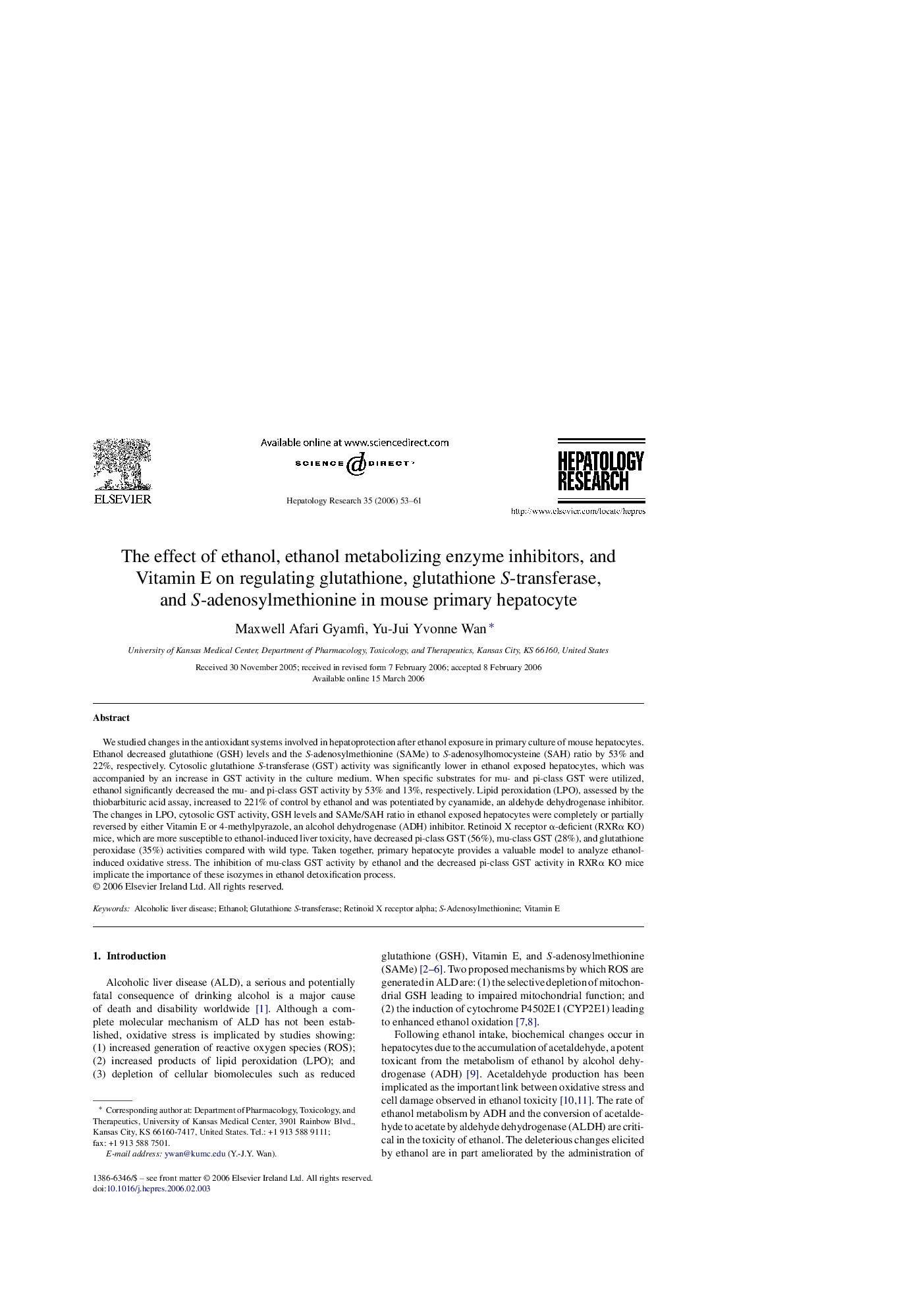| Article ID | Journal | Published Year | Pages | File Type |
|---|---|---|---|---|
| 3311415 | Hepatology Research | 2006 | 9 Pages |
Abstract
We studied changes in the antioxidant systems involved in hepatoprotection after ethanol exposure in primary culture of mouse hepatocytes. Ethanol decreased glutathione (GSH) levels and the S-adenosylmethionine (SAMe) to S-adenosylhomocysteine (SAH) ratio by 53% and 22%, respectively. Cytosolic glutathione S-transferase (GST) activity was significantly lower in ethanol exposed hepatocytes, which was accompanied by an increase in GST activity in the culture medium. When specific substrates for mu- and pi-class GST were utilized, ethanol significantly decreased the mu- and pi-class GST activity by 53% and 13%, respectively. Lipid peroxidation (LPO), assessed by the thiobarbituric acid assay, increased to 221% of control by ethanol and was potentiated by cyanamide, an aldehyde dehydrogenase inhibitor. The changes in LPO, cytosolic GST activity, GSH levels and SAMe/SAH ratio in ethanol exposed hepatocytes were completely or partially reversed by either Vitamin E or 4-methylpyrazole, an alcohol dehydrogenase (ADH) inhibitor. Retinoid X receptor α-deficient (RXRα KO) mice, which are more susceptible to ethanol-induced liver toxicity, have decreased pi-class GST (56%), mu-class GST (28%), and glutathione peroxidase (35%) activities compared with wild type. Taken together, primary hepatocyte provides a valuable model to analyze ethanol-induced oxidative stress. The inhibition of mu-class GST activity by ethanol and the decreased pi-class GST activity in RXRα KO mice implicate the importance of these isozymes in ethanol detoxification process.
Keywords
Related Topics
Health Sciences
Medicine and Dentistry
Gastroenterology
Authors
Maxwell Afari Gyamfi, Yu-Jui Yvonne Wan,
